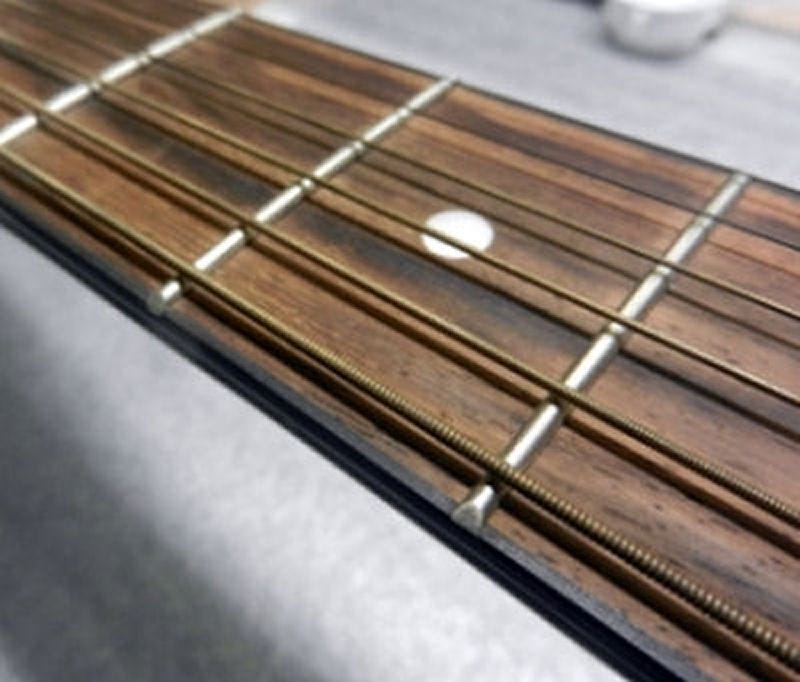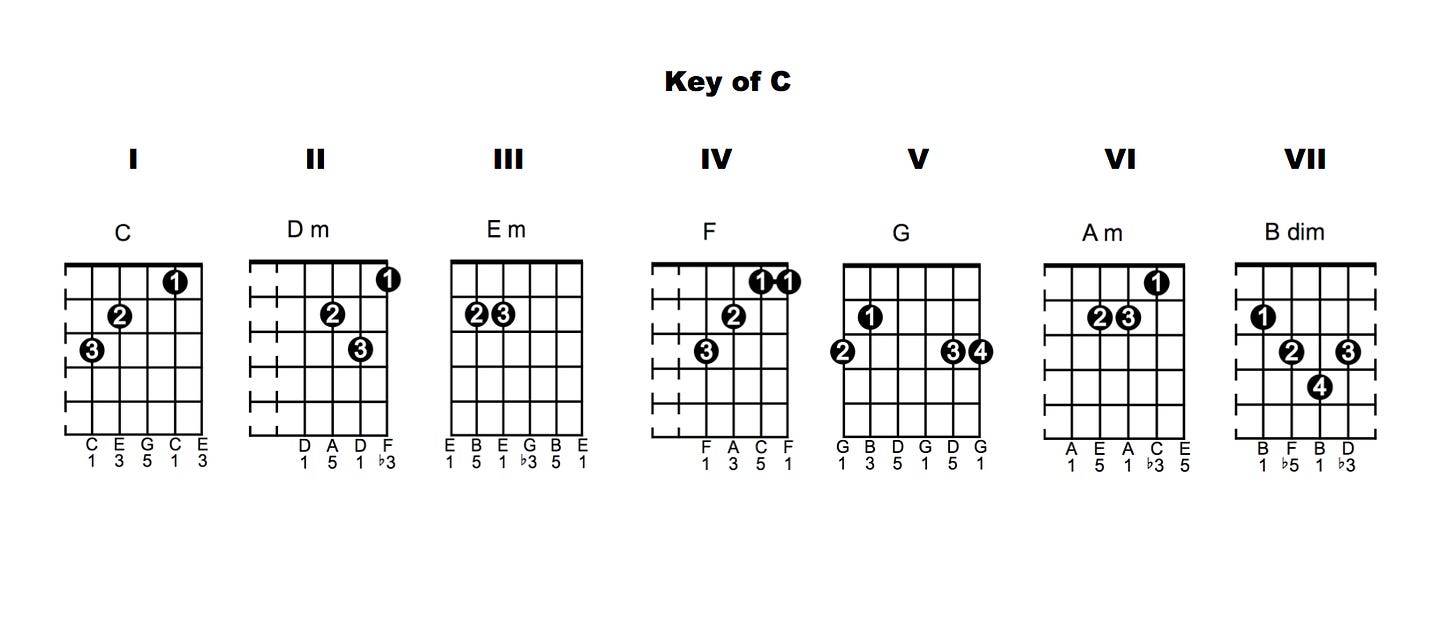How many ways can a guitar chord chart be written?
There are a few. Let's take a look at them. [Intermediate Beginner Lesson]
Thank-you for taking the time to read this article. I am grateful that you have subscribed to my newsletter. Even though my SubStack SoundHole Music Newsletter is free, my work in writing these helpful and informative guitar lessons, along with many other interesting articles on music, is completely supported by you - my paying subscribers. It's pretty cheap too. For a mere $.26/day ($8/month), or a staggeringly low cost of only $.19/day ($72/year), you can help support my amazing Substack SoundHole Music Newsletter by investing as a paid subscriber. - Thank-you, Dave.
Music uses a lot of math and a lot of nomenclature - symbols and charts, Roman numerals and multi-layered formulas, theory and application and above all - creativity. Sometimes, even music can be written in a creative way to make things easier by taking up less room on the page. One of the quickest ways to write out chords is to use simple numbers.
Intermediate Beginner Lesson
As a guitar instructor, I try to teach my students the fastest, easiest and most economical ways to learn and practice guitar language. I want to push memorization and critical thinking so that they can think more quickly when they play their music, especially when they are improvising.
Minimalist chords
Sometimes, a chord chart will just have the names of the chords written in a progression, without any pictures or charts. All that is written is a chord name like "C" in the first measure and maybe "Am" in the next measure, followed by "F" in the third measure and "G7" in the fourth measure. That’s it, there's nothing else to help you to know how to play those chords or what they even look like. This is the ultimate goal for every guitar player.
Your first chord box charts
One of the most common ways to learn names and shapes of chords is to use the standard box chart. For example, here are the sven triad chords in the key of C major:
These are the type of chords that most guitarists learn to read from their first lessons. It has all of the information you would need in order to construct the chord. The numbers at the top or bottom indicate the fingers you would use to play the note on the string. The finger positions are marked with circles, both white and black. Number 1, 2, 3 and 4 represent the fingers.
Tablature chords
Next we have a way to look/read music as a sort of "short hand" for traditional music notation. This form is called "tablature". Each of the six lines represents the six strings on your guitar. The top line is the high "E" string or the first string. The bottom line is the low "E" string or the sixth string. The numbers that are placed on the lines are the frets, not your fingers. Tablature requires (assumes) that you can figure out which fingers you will use to play chords and notes. Notes are played as you read left to right as single numbers. Chords on the other hand, are stacked vertically two or more notes together.
You can learn more about tablature in my previous article on "How to read Tablature music". (paid subscription article)
Simple six numbers
I think that one of the easiest ways to write out chord shapes without using tablature or box charts is to simply write the frets in numbers left to right. The left number represents the sixth string and the far right number represents the first string. For example:
The common open string "C" chord looks like this:
x32010
"x" means that you do not play that string. "0" means that you play that string open.
Here is a list of the seven triad chords in the key of "C major", written in this form:
C - x32010
Dm - xx0231
Em - 022000
F - x33211
G - 320033
Am - x02210
B° - x2343x
The idea behind building your chord vocabulary is to memorize them without using charts or graphs. The ultimate goal is to be able to read a chord chart with just the names of the chords and nothing else to help you in remembering the shapes of the chords.
How many chords do you need to know?
I think that if you can learn all of the basic open string triad chords and "7th" chords, you're looking at somewhere around 30-40 chords, maybe more. Adding "barre" chords is going to significantly increase that number. Then there are the jazz chords that will expand your vocabulary even more. Imagine knowing how to play 100-200 chords just by looking at their names.
This is stuff that takes a long time to learn, but it can be done as long as you put in the practice and genuine effort. Try not to limit yourself with one genre of music like country, rock and blues, that use only a handful of chords. Always try to add extended chords to your vocabulary. Don't be intimidated by the complexities of some jazz chords. Jazz chords are just like regular chords, just with a lot more colors.
Try this one: AM13 - 5x6677
I call it "The Garden Chord''
All kinds of colors, just like a garden!
Please feel free to comment questions or suggestions for future articles on guitar lessons.









